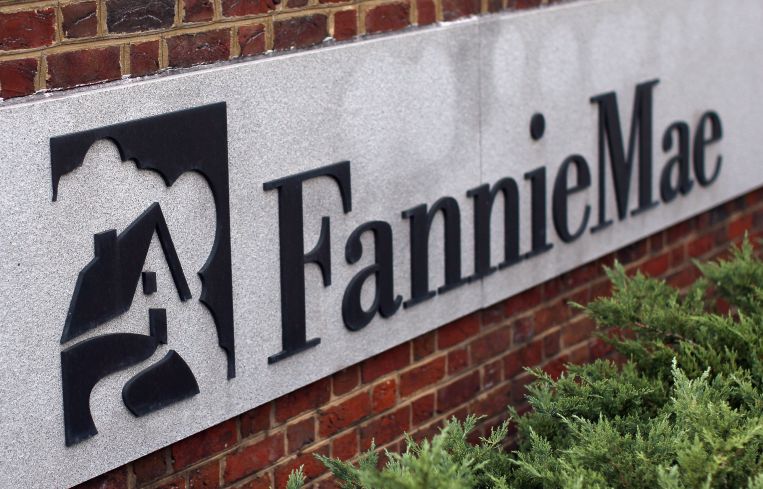Fannie Mae Raises Small-Balance Limit, Faces Down Freddie Mac, Banks
By Matt Grossman February 7, 2019 4:41 pm
reprints
Fannie Mae moved to expand significantly its role in guaranteeing lightweight multifamily loans this week, announcing that it would double the maximum size of loans it can back under its small-balance mortgage program.
In the past, the government-sponsored entity capped small-balance loans at $3 million in most parts of the country, with a $5 million limit in a handful of urban markets. Now, the cap will rise to $6 million everywhere, bringing Fannie’s approach more in line with that of its counterpart, Freddie Mac. Freddie’s small-balance loan limit ranges from $6 million to $7.5 million, depending on the market.
“Increasing the loan limit for our small-mortgage loan program will provide more capital and liquidity to the small-loan marketplace and help address the significant affordable workforce housing supply issues facing our country today,” Michael Winters, a Fannie Mae customer engagement executive, said in a statement. “Our commitment to providing sustainable financing solutions that enhance affordability, security and convenience of financing smaller properties plays an important role in securing a key source of housing for working families.”
For small balance loans, Fannie Mae relaxes the breadth of documentation lenders and borrowers have to submit to get their debt secured by the behemoth Washington, D.C.-based agency. That can save borrowers a pretty penny when it’s time to pay closing costs, according to Larry Wilemon, a Los Angeles-based multifamily lender at Walker & Dunlop, which originates Fannie Mae loans.
“In round numbers, it’s going to cost $12,000 to $14,000 to close a small-balance agency loan, inclusive of lender legal costs,” Wilemon said. “On a conventional loan”—that is, one that exceeds the agencies’ small-balance threshold—”it’s more like $35,000, inclusive of lender legal costs and the borrower attorney’s opinion letter.”
In other words, to a landlord borrowing, say, $5.5 million to refinance an apartment building, Fannie Mae’s move to expand its small-loan limit could cut closing costs in half.
In the eyes of Rick Wolf, who heads up small-balance lending for Greystone, another Fannie Mae lender, that makes the adjustment something of a shot across the bow of banks with active small-loan balance-sheet businesses. Reducing closing costs on loans under $6 million could eliminate the last quantum of attraction borrowers feel for working with balance-sheet lenders, he said, because agencies already offer a sweeter deal in every other respect.
“I think borrowers like agency products,” Wolf said. “If you’re a bank client, you might be only getting three- or five-year money. Now you can go to Fannie Mae for a loan product that puts you into a term structure you may not get from a bank.”
The agencies, Wilemon said, already offer a superior product when it comes to structure.
“Recourse is important,” the Walker & Dunlop executive said, noting that banks typically don’t offer smaller borrowers the same recovery protections they get from the agencies. And agencies also offer interest-only debt to some small-balance borrowers, he said, something unheard of from a balance-sheet bank.
“If I’m someone that’s thinking I want non-recourse debt, and maybe I want to go out seven, 10 or 15 years, Fannie and Freddie are the answer,” Wilemon said.
The move is sure to ignite tussles between the two agencies for business in the $3 million to $6 million slot—which has previously been Freddie Mac’s exclusive territory. But though Fannie Mae’s realignment brings the two institutions’ policies into much closer alignment, each insists that it’s not preoccupied with its cousin’s small-balance scheme.
Asked to comment on Fannie Mae’s decision, a Freddie Mac executive did not directly address the change.
“We assess a number of factors when setting the limits for our [small-balance] loans,” Stephen Johnson, a small-balance executive at Freddie Mac, said in an email. “We do a tremendous amount of research to be sure that the limits we set are serving the diverse array of markets that depend on the liquidity we provide.”
Fannie Mae managers said that their side, too, arrived at its limit through careful consideration and research.
“We came up with this independently,” Ann Atkinson, who leads multifamily lending relationships for Fannie Mae, said in an interview.
“Based on our data, $6 million supported a typical smaller property, which our streamlined underwriting and third-party reports are geared to,” added Paul Gembara, who works on credit underwriting for Fannie.
But that deliberate, analytical approach shouldn’t belie the strength of the statement Fannie Mae hopes to make with the higher loan limit, Atkinson said. Granted, Fannie’s small-balance sheet loan volume—$2.2 billion last year—made up only less than 5 percent of its total business, but in New York City, for example, small-balance loans made up nearly half of securitized agency debt last year, according to data from Trepp. (That data combines both Fannie Mae and Freddie Mac business.)
Nor, agency lenders hastened to emphasize, should the move be seen as a loosening of credit standards—an often-tempting maneuver 10 years into a business cycle.
“We always do the same amount of diligence” on small-balance loans, Wolf said. The differences, he noted, lie in what he characterized as minor procedures, like doing a high-level database search for some potential property issues as opposed to an in-depth site-specific analysis.
“This isn’t a lower-due-diligence business,” he said.



